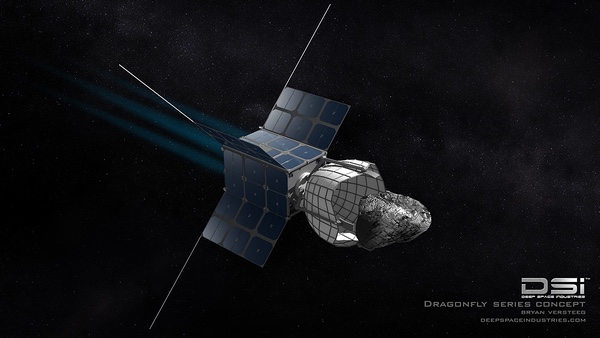Asteroid mining: appealing to our romantic side?by John Hollaway
|
| “If humans were ever able to get their hands on just one asteroid, it would be a game-changer.” Yeah, right. |
No, I had not. Indeed, I found that the myth that there were fortunes to be made among the stars was even more widespread than the myth that owning a gold mine would make you rich. So, this is written by a grinch who wants to tell you, as I told many of my former clients, that you are, putting it politely, encountering an appeal to your romantic side. Specifically, asteroid mining is not going to make you rich; it might, like owning a gold mine, give you a conversational gambit, something to entertain dinner guests with. But rich? No.
However, aerospace, unlike mining, is inhabited by large and dignified institutions whose knowledgeable rocket scientists must know what they are about. So, when NASA said that there was $700 quintillion worth of metal in the asteroid belt, or about $100 billion apiece for everybody, then clearly, in the words of Business Insider, “If humans were ever able to get their hands on just one asteroid, it would be a game-changer.” Yeah, right.
A few boring old facts. Only one sample has ever been taken from an asteroid successfully: in 2005, the Japanese Hayabusa spacecraft landed on the small asteroid Itokawa and returned to Earth with a few grams of dust from its surface. The minerals in it were plagioclases and olivine and pyroxene, almost valueless metal silicate compounds found pretty well everywhere on Earth. A more interesting result will be that coming from the planned 2026 visit to the asteroid Psyche by NASA. This appears to be from, or perhaps is, the frozen iron-nickel core of a planet, and the spacecraft will use remote sensing to analysz the surface. If it is like our own core, it will contain platinum group metals as well. It’s just a bit far out of town, so to speak: the mission will take four years to get there.
Now, to my alarm, we have the US Geological Survey talking up the commercial potential of space. The USGS has done a great job in conjunction with NASA over the years with its Landsat imagery, but now Angel Abbud-Madrid, director of the Center for Space Resources at the Colorado School of Mines, says, “The space resources community will benefit greatly from working together with the USGS to assess the location and value of minerals, energy, and water on the Moon, Mars, and asteroids.”
Beware: geologists are optimists. They are closer in spirit to prospectors than they would like to admit: “Something lost behind the Ranges. Lost and waiting for you. Go!" Kipling never wrote about grumpy pessimistic miners like me who had to get underground and dig the stuff out that these guys said was there. Sure, sometimes it was.
| When stuff gets short, its price goes up and more stuff is worth mining (or farming for that matter) than before. |
Let me do some geology and explain why the mining of Psyche is unlikely to be a winner. Sometimes our own molten iron and nickel core gets squirted through to the surface where the crust is stretched thin, as with Africa’s Rift Valley. At the southern end, in Zimbabwe and South Africa, this has resulted in mines that produce base metals and platinum group metals from where they have settled out into narrow enriched bands. But these ores are still at grades where, after all the business of mining and so on, their contained refined metal value is only of the order of $230 a ton. Psyche is safe.
Ah yes, but, I hear you say, we are running out of metals. We will have to turn to space to keep going. Ah yes, but, you hear me say, remember the Club of Rome? In 1968 this was created as a self-appointed assemblage of the good and great to keep an eye on the health of the planet. In 1972 it (actually a team of researchers at MIT) said that we were going to run out of stuff if we kept going in the way we were. This has not happened because, when stuff gets short, its price goes up and more stuff is worth mining (or farming for that matter) than before. So it is not going to happen for a very long time, and when you read an article such as this one, bear this in mind.
To give you a concrete idea of what this means, you can take the lithium mines of Zimbabwe as an example. There are now four of them, three of which have come into existence since the success of the lithium-ion battery pushed up demand. All three are on long-known resources that became economic to develop as the price went up. Indeed, their developers were in a race to get into the market before enough water had been evaporated from lithium-rich pans in Peru and Bolivia to push prices down again.
The one item worth seeking in space is water. A steam rocket, where solar electricity generates steam to be blasted out the back of a boiler, will have a specific impulse of 100 to 200 seconds, depending on the pressure. This is low compared with conventional rockets but, in deep space, it could be invaluable.
So, perhaps we can modify Mark Twain’s comment to, “An asteroid is a rock in space that a liar might like to own.” Particularly if it is wet.
Note: we are temporarily moderating all comments subcommitted to deal with a surge in spam.
